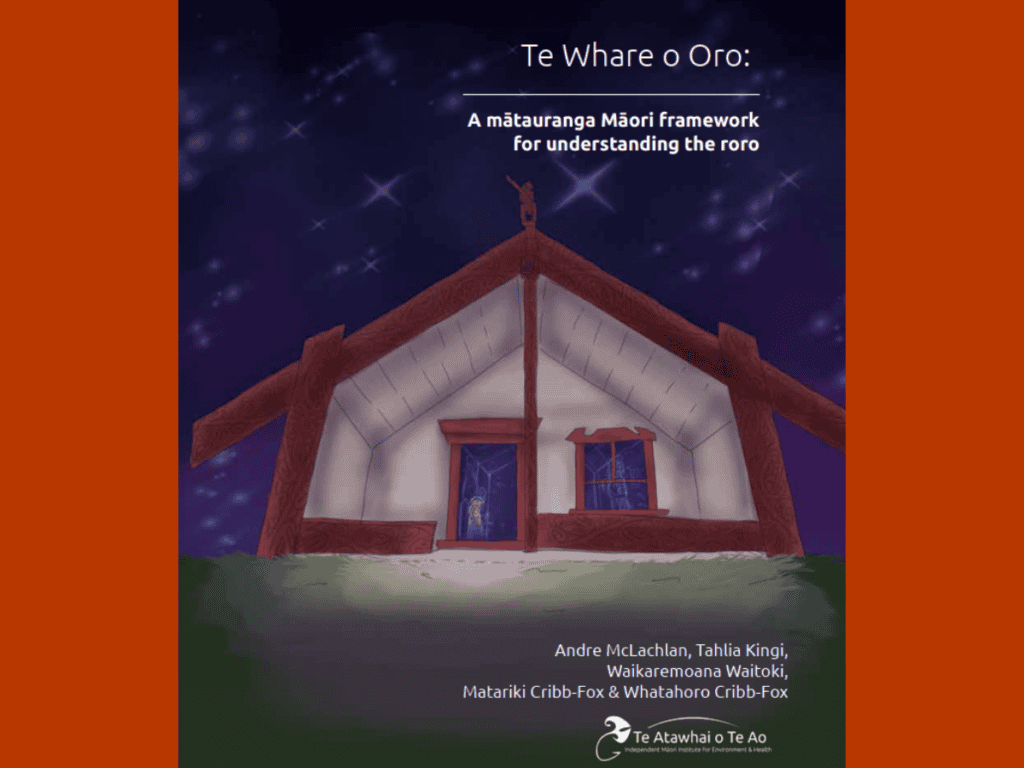Ma te kōrero, ka mōhio,
Ma te mōhio, ka mārama,
Ma te mārama, ka mātau,
Ma te mātau, ka ora!
Through discussion comes awareness,
through awareness comes understanding,
through understanding comes knowledge,
through knowledge comes wellbeing!
What better way to promote understanding of brain function and health for Māori, than to turn to mātauranga Māori for answers? The use of mātauranga for provision of health resources has multiple benefits: it offers insights from a holistic understanding of human wellbeing; it enables western science to be explored through a culturally relevant lens, thereby increasing Māori engagement; it adds an Indigenous perspective to mainstream health; and, ultimately, it acts to revitalise mātauranga thus strengthening cultural identity which is known to be strongly associated with improved wellbeing for Māori.
Mātauranga Māori is what Andre McLachlan (Ngāti Apa, Muaupoko) turned to when he was looking for ways to bring out the best in neurodiverse children. As a Māori clinical psychologist, he wanted a strengths-based model to promote understanding of how brains work. Andre found himself informally using te whare tūpuna (the ancestral meeting house) as an analogy for brain structure and development and that was the genesis for the research project “Te Roro: a Mātauranga Māori Study” funded by The Ageing Well National Science Challenge.
Researchers at Te Atawhai o Te Ao Independent Māori Institute for Environment and Health, led by Director Dr Rāwiri Tinirau (Te Āti Haunui-a-Pāpārangi, Ngāti Rangi, Ngā Rauru Kītahi, Ngāti Ruanui, Ngā Wairiki-Ngāti Apa, Ngāti Tūwharetoa, Ngāti Maru), designed a study to investigate what mātauranga Māori is known about the roro (brain) and how that mātauranga can contribute to maintaining and improving the health and wellbeing of the roro. They wanted to produce a resource for Māori health and education workers that would encourage Māori-centric, holistic approaches to supporting those with brain conditions.
A team of Māori clinical psychologists, master carvers, and mātauranga experts delved deeply into traditional sources of knowledge such as whakairo (carvings), karakia (prayers), mōteatea (chanted poetry and song), and pūrākau (stories) to bring to light the Māori understanding of the roro, its connection to the body, and its tapu (sacred) nature. The roro has many connections with atua (gods) that provide insight into its function.
Among the rich metaphors and intergenerational wisdom of mātauranga Māori, the whare tūpuna emerged as an informative analogy for thinking about brain health. For a start, as project coordinator and co-researcher Matariki Cribb-Fox explains, “All forms of cognition take place in the whare – that’s the home of wānanga and intergenerational knowledge exchange”. But also, the entire structure of the whare tūpuna can be considered a physical manifestation of an ancestor.
Walking into a whare tūpuna is described as walking inside an ancestor, with the koruru (carved figure at the front apex) being the head, the maihi (front bargeboards) being the arms, the amo (bargeboard supports) being the legs, the tāhuhu (ridge pole) being the spine, and the heke (rafters) being the ribs, among many other features. The section of the main ridge pole that extends from the front of the house to the front of the veranda is the roro. In some cases, the whole veranda area represents the roro. These structural aspects of the whare are linked to many layers of genealogical meaning making it ripe for use as a tool to bring concepts of brain health and its links to the nervous system into a physical, observable form.
Kupu whakarite (metaphors and similies) are used extensively in Māori oral traditions as a way of applying knowledge. The whare is already a useful framework in health with “Te Whare Tapa Wha”. So, the researchers held wānanga to weave together the mātauranga of the roro and te whare tūpuna, and “Te Whare Tapa Wha”, to develop a new model. Traditional meanings attached to the four main pou holding up the whare were found to complement the functions of the four main components of the brain: the brain stem, cerebellum and diencephalon, limbic system, and cerebral cortex. A western clinical understanding of brain development was interwoven so that by walking through the whare, you are also walking through a sequence of brain development.
When mātauranga Māori and western science walk side by side towards a common goal, they learn from each other. The interweaving of both knowledge systems has made for a powerful resource. The resulting model, “Te Whare o Oro”, has already been put to work to provide culturally enriching solutions for those working with or living with brain conditions.
Matariki Cribb-Fox (Ngāti Apa, Ngāti Pikiao, Ngāti Rangiwewehi, Te Āti Haunui-a-Pāpārangi, Taranaki Whānui) is thrilled with the response to “Te Whare o Oro”, “It’s taking on a life of its own”. It has become very popular because it resonates with people and they like how accessible it is, there’s a process to follow, and resources to support it. “Te Whare o Oro” has been piloted around the country for use with children with learning needs; the Ministry of Education want to develop it, and Kura Kaupapa want toolkits in Te Reo Māori. Although initially developed as a tool for identifying neurological difficulties, it has grown to have many uses, including as a reflection tool for life in general. The Kenepuru stroke unit have been in touch to discuss the viability of training doctors after a patient stumbled across the literature on it. There’s even international interest from other Indigenous health practitioners.
Matariki says the funding from Ageing Well has really helped with the production of resources to support the model. Providing tangible activities has been part of the success of its uptake. Matariki was raised very Māori. She didn’t use English until she was seven or eight. She understands the intrinsic models of Māori knowledge very well. In adulthood she could see the value in using a Māori framework to propagate concepts in mainstream Aotearoa, “My interest is in finding the value of the mātauranga process to bridge gaps”. When this project began, she didn’t know much neuroscience, “but listening to Andre explain synapses and axons I realised I could bridge the clinical and cultural divide by seeing Māori analogies for brain structure and function.”
Matariki takes pride in what she describes as the “responsible propagation of mātauranga Māori”. Her elders have a degree of protectionism around mātauranga, “but we can fall victim to protecting it so much that it gets forgotten”. Matariki worked on the project with her husband Whatahoro Cribb-Fox (Ngāti Kahungunu ki Te Wairarapa, Ngāti Porou, Te Whakatōhea) and she notes, “This is not the first time we’ve been able to open the Māori world through Māori models of understanding and every time we do, it’s really exciting. If work like this can begin to bridge the gap between Māori and Pākehā, then I’m really excited about that”.
Accessibility has been a huge motivator for this work. The researchers want benefits for Māori because that is where the greatest need is, but that doesn’t mean that the content is exclusively for Māori. Everyone goes through neurological struggles at some stage. If mātauranga can be an effective tool, then let’s use it. And can’t we all benefit from the visualisation that in the brain, just as in the whare tūpuna, there are places of light and dark, there are busy and quiet places, but there on the back wall, always guiding and advising you, are your ancestors.
RESEARCHERS:
- Dr Rāwiri Tinirau
- Morgan Tupaea
- Connor Pauro
- Matariki Cribb-Fox
- Whatahoro Cribb-Fox
- Dr Takirirangi Smith
- Dr Andre McLachlan
- Dr Cherryl Smith
- Brigham Anderson
- Hine Maraku

